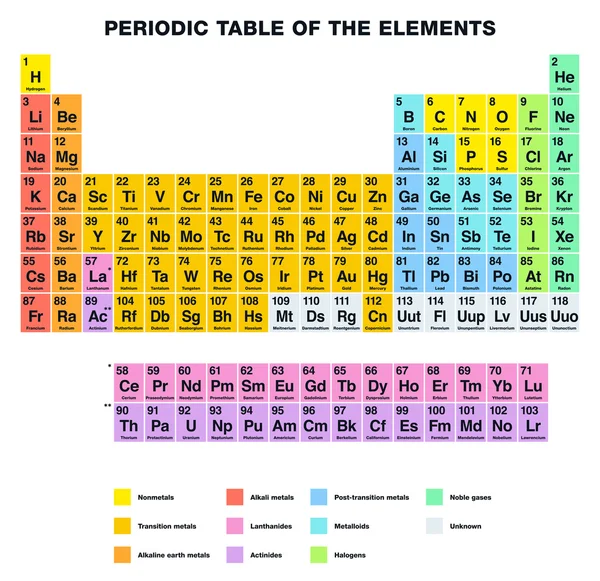In 1961, the Commission recommended A r (Cl) = 35.453(1), based on the atomic weight of silver and on Ag/AgCl equivalent ratios determined chemically by many well-known authorities. Following its 1967 discussion of Ag, Cl, and Br, which were important in the chemical determination of atomic weights of several other elements, the Commission did not assign any new atomic-weight values defined. Atomic Number: 17: Atomic Radius: 175 pm (Van der Waals) Atomic Symbol: Cl: Melting Point:-101.5 °C: Atomic Weight: 35.45: Boiling Point:-34.04 °C: Electron. The atomic number of an element is equal to the total number of protons in the nucleus of the atoms of that element. The atomic number can provide insight into the electronic configuration of the element. For example, carbon has an electron configuration of He 2s 2 2p 2, since its atomic number is 6. The mass number of carbon-13 is 13. When a number is given following an element name, this is its isotope, which basically states the mass number. To find the number of neutrons in an atom of the isotope, simply subtract the number of protons (atomic number). So, carbon-13 has 7 neutrons, because carbon has atomic number 6. Chlorine is a chemical element with atomic number 17 which means there are 17 protons and 17 electrons in the atomic structure. The chemical symbol for Chlorine is Cl. The atom consist of a small but massive nucleus surrounded by a cloud of rapidly moving electrons.
| Some tree frogs contain a chlorine compound in their skin that is a very powerful pain killer. This chemical, when used in small doses, has no side effects; in large doses, however, it is fatal. |
Chlorine
/what-are-the-first-20-elements-608820-FINAL-5b758ab446e0fb002c67279a.png)
| Atomic Number: | 17 | Atomic Radius: | 175 pm (Van der Waals) |
| Atomic Symbol: | Cl | Melting Point: | -101.5 °C |
| Atomic Weight: | 35.45 | Boiling Point: | -34.04 °C |
| Electron Configuration: | [Ne]3s23p5 | Oxidation States: | 7, 6, 5, 4, 3, 2, 1, −1 (a strongly acidic oxide) |
History
From the Greek word chloro, greenish yellow. Discovered in 1774 by Scheele, who thought it contained oxygen. Chlorine was named in 1810 by Davy, who insisted it was an element.
35 17 Cl Atomic Number
Sources
In nature it is found in the combined state only, chiefly with sodium as common salt (NaCl), carnallite, and sylvite.
Properties
Cl Atomic Number Of Protons
It is a member of the halogen (salt-forming) group of elements and is obtained from chlorides by the action of oxidizing agents and more often by electrolysis; it is a greenish-yellow gas, combining directly with nearly all elements. At 10°C one volume of water dissolves 3.10 volumes of chlorine, at 30°C only 1.77 volumes.
Uses
Chlorine is widely used in making many everyday products. It is used for producing safe drinking water the world over. Even the smallest water supplies are now usually chlorinated.
It is also extensively used in the production of paper products, dyestuffs, textiles, petroleum products, medicines, antiseptics, insecticides, food, solvents, paints, plastics, and many other consumer products.
Most of the chlorine produced is used in the manufacture of chlorinated compounds for sanitation, pulp bleaching, disinfectants, and textile processing. Further use is in the manufacture of chlorates, chloroform, carbon tetrachloride, and in the extraction of bromine.
Organic chemistry demands much from chlorine, both as an oxidizing agent and in substitution, since it often brings many desired properties in an organic compound when substituted for hydrogen, as in one form of synthetic rubber.
Handling

Chlorine is a respiratory irritant. The gas irritates the mucus membranes and the liquid burns the skin. As little as 3.5 ppm can be detected as an odor, and 1000 ppm is likely to be fatal after a few deep breaths. In fact, chlorine was used as a war gas in 1915.
Exposure to chlorine should not exceed 0.5 ppm (8-hour time-weighted average - 40 hour week).
How big is an atom? A simple question maybe, but the answer is not at all straighforward. To a first approximation we can regard atoms as 'hard spheres', with an outer radius defined by the outer electron orbitals. However, even for atoms of the same type, atomic radii can differ, depending on the oxidation state, the type of bonding and - especially important in crystals - the local coordination environment.
Take the humble carbon atom as an example: in most organic molecules a covalently-bonded carbon atom is around 1.5 Ångstroms in diameter (1 Ångstrom unit = 0.1 nanometres = 10-10 metres); but the same atom in an ionic crystal appears much smaller: around 0.6 Ångstroms. In the following article we'll explore a number of different sets of distinct atomic radius sizes, and later we'll see how you can make use of these 'preset' values with CrystalMaker.
Atomic Radii
Atomic radii represent the sizes of isolated, electrically-neutral atoms, unaffected by bonding topologies. The general trend is that atomic sizes increase as one moves downwards in the Periodic Table of the Elements, as electrons fill outer electron shells. Atomic radii decrease, however, as one moves from left to right, across the Periodic Table. Although more electrons are being added to atoms, they are at similar distances to the nucleus; and the increasing nuclear charge 'pulls' the electron clouds inwards, making the atomic radii smaller.
Atomic radii are generally calculated, using self-consistent field functions. CrystalMaker uses Atomic radii data from two sources:
VFI Atomic Radii:
Vainshtein BK, Fridkin VM, Indenbom VL (1995) Structure of Crystals (3rd Edition). Springer Verlag, Berlin.CPK Atomic Radii:
Clementi E, Raimondi DL, Reinhardt WP (1963). Journal of Chemical Physics 38:2686-

Covalent Radii
The covalent radius of an atom can be determined by measuring bond lengths between pairs of covalently-bonded atoms: if the two atoms are of the same kind, then the covalent radius is simply one half of the bond length.
Whilst this is straightforward for some molecules such as Cl2 and O2, in other cases one has to infer the covalent radius by measuring bond distances to atoms whose radii are already known (e.g., a C--X bond, in which the radius of C is known).
CrystalMaker uses covalent radii listed on CrystalMaker-user Mark Winter's excellent Web Elements website.
Van-der-Waals Radii
Van-der-Waals radii are determined from the contact distances between unbonded atoms in touching molecules or atoms. CrystalMaker uses Van-der-Waals Radii data from:
Bondi A (1964) Journal of Physical Chemistry 68:441-
Atomic-Ionic Radii
These are the 'realistic' radii of atoms, measured from bond lengths in real crystals and molecules, and taking into account the fact that some atoms will be electrically charged. For example, the atomic-ionic radius of chlorine (Cl-) is larger than its atomic radius.
The bond length between atoms A and B is the sum of the atomic radii,
dAB = rA + rB
CrystalMaker uses Atomic-Ionic radii data from:
Slater JC (1964) Journal of Chemical Physics 39:3199-
Crystal Radii
Perhaps the most authoritative and highly-respected set of atomic radii are the 'Crystal' Radii published by Shannon and Prewitt (1969) - one of the most cited papers in all crystallography - with values later revised by Shannon (1976). These data, originally derived from studies of alkali halides, are appropriate for most inorganic structures, and provide the basis for CrystalMaker's default Element Table. The data are published in:
Shannon RD Prewitt CT (1969) Acta Crystallographica B25:925-946
Shannon RD (1976) Acta Crystallographica A23:751-761
The Colours of Atoms
Colour-coding atoms by element type is an important way of representing structural information. Of course, atoms don't have 'colour' in the conventional sense, but various conventions have been established in different disciplines.
Many organic chemists use the so-called CPK colour scheme These colours are derived from those of plastic spacefilling models developed by Corey, Pauling and (later improved on by) Kultun ('CPK').
Cl Atomic Numbers
Whilst the standard CPK colours are limited to the elements found in organic compounds, CrystalMaker's VFI Atomic Radii, CSD Default Radii and Shannon & Prewitt Crystal Radii Element Tables provide a more diverse range of contrasting colours.

Cl Atomic Number 17

Organic Structures Alert! CrystalMaker's default Element Table is the Shannon & Prewitt 'Crystal' radii, which is appropriate for most inorganic structures. When working with organic structures, one of the covalent or Van-der-Waals sets will be more appropriate.
